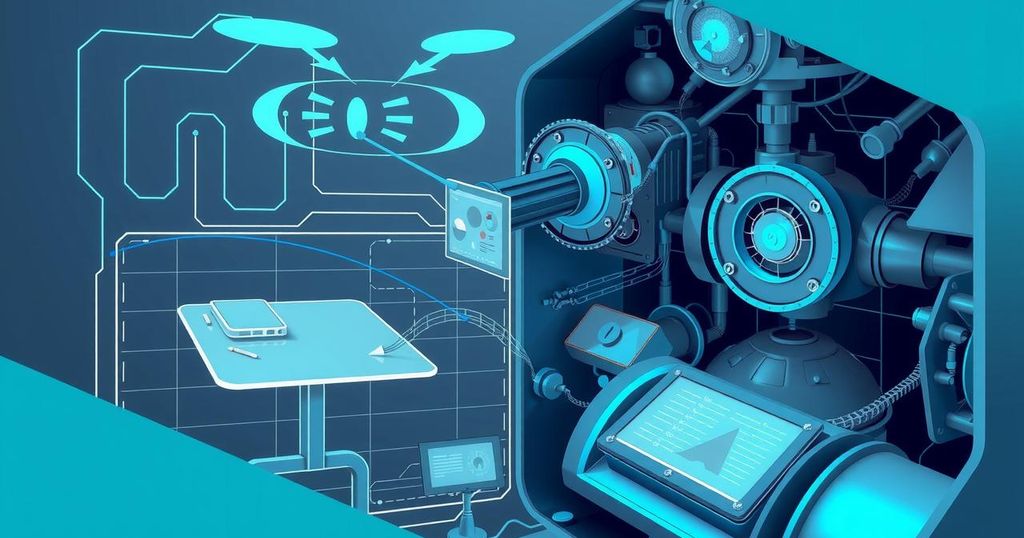Harnessing the Power of Artificial Intelligence to Advance Safety
Artificial intelligence is transforming safety protocols in equipment manufacturing. AI enhances product safety through applications like pedestrian detection and PPE monitoring. While it offers numerous benefits, concerns about data usage accuracy and decision-making must be addressed. AEM promotes safety education and resources through events like the Product Safety & Stewardship Conference.
Safety, a top priority for equipment manufacturers and customers alike, has taken on a new dimension with the advent of artificial intelligence (AI). This technology, rich with untapped potential, can significantly enhance safety measures by performing tasks typically handled by human intelligence. Tom Belhumeur, a senior executive at Mavenoid, shared insights at AEM’s recent Product Safety & Stewardship Conference about how AI is reshaping safety protocols in the industry. “As you start to solve problems and implement technology, it’s crucial not to create new hazards or risks,” he advised.
AI now is making headway as a reliable tool for analyzing vast data sets, automating tedious tasks, and even recognizing various objects. According to Belhumeur, when we bring machine learning into play, we see computers beginning to make decisions. “For instance, I might program a robot to perform specific tasks, and through machine learning, it learns where those tasks should be applied,” he explained, showcasing the potential of AI in operational efficiency.
Throughout June, AEM will roll out a series of safety-focused content across its platforms, aiming to educate manufacturers and operators. They’ve also launched a free online safety toolkit to bolster safety awareness and training for off-highway equipment across sectors like construction, agriculture, and forestry. Participants can create a free account in the AEM Safety Toolkit online.
Diving deeper into AI’s safety applications, Belhumeur outlined remarkable examples already making waves. For starters, pedestrian detection tech uses cameras to spot individuals or objects, which alerts operators to necessary safety measures. Also on the list is vehicle detection, where AI identifies equipment presence and location through camera feeds. This tech can analyze vehicle speed and count, enhancing traffic safety.
Then there’s PPE detection, utilizing deep-learning algorithms to identify violations in personal protective equipment usage. Plus, distracted operator detection helps identify driver focus levels, an important factor for safety across various machines. Belhumeur expressed that these technologies often trigger responses via text or calls to ensure safety measures are taken when needed.
However, with the rise of AI, questions persist about data collection and usage accuracy. Is the right data being gathered? And, how reliable are AI decisions? Belhumeur emphasized the importance of tracking AI’s decision-making processes. “If a decision needs revisiting, and there’s no record to assess, it’s critical for AI systems to log decisions for accountability,” he remarked.
Looking ahead, AI’s future shines brightly across the board from phones to cars, and it’s starting to infiltrate every corner of technology. Particularly concerning safety, anywhere people are in danger, AI has shown it can help mitigate risks effectively. Be it through systems integration or sensor fusion, AI is finding its footing in helping manufacturers manage safety challenges.
Belhumeur summed it up well: “There are positives and negatives with AI, but it circles back to risk mitigation. Evaluating technology requires asking the right questions to uncover the vital answers.” In context of the bigger picture, AEM’s Product Safety & Stewardship Conference serves to unite heavy equipment manufacturers and experts, fostering discussions on safety liability and regulatory standards, shaping the future of the industry.
For more information about the conference, the official event website offers detailed insights on what’s to come, ensuring that industry professionals are equipped to navigate the evolving landscape of product safety and stewardship.
In summary, the integration of artificial intelligence into equipment safety protocols stands to revolutionize the industry. With applications from pedestrian detection to PPE monitoring, AI not only enhances safety but also streamlines operations. However, it’s crucial to address data accuracy and decision-making reliability. As AI technology continues to evolve, its potential for risk mitigation remains paramount, making the conversation around safety practices increasingly important.
Original Source: www.aem.org




Post Comment